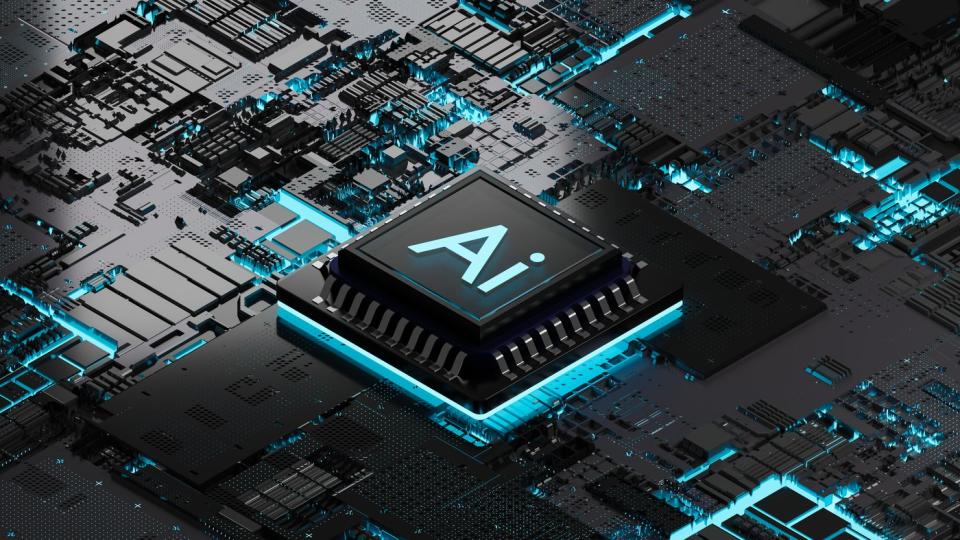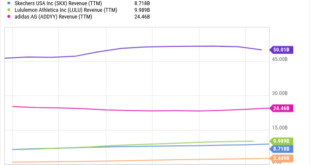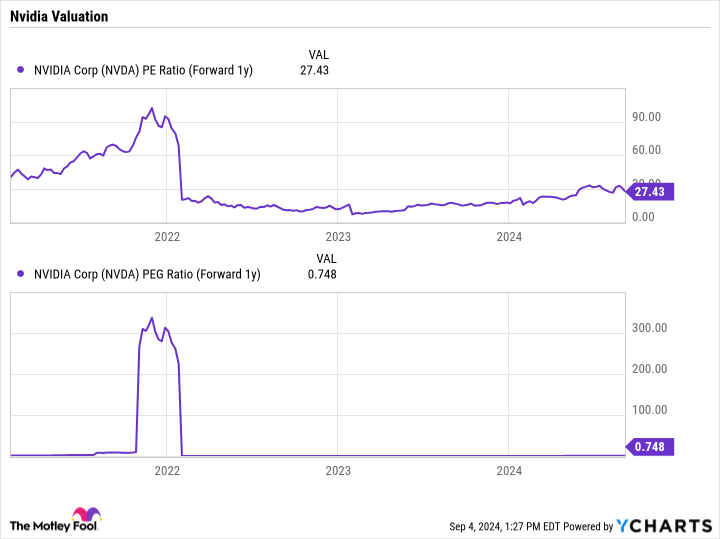It’s no secret that Intel (NASDAQ: INTC) has been struggling. The stock is down more than 60% year to date and has been the worst performer in the Dow Jones Industrial Average this year.
The company was once the largest chipmaker in the world, dominating the personal computer (PC) space. That helped it become one of the first two technology companies to join the famed Dow Jones index, along with Microsoft back in the late 1990s. However, the paths of the Wintel duo have greatly diverged over the past decade.
Microsoft is an artificial intelligence (AI) leader that has expanded into other businesses, such as cloud computing, while Intel could be set to start losing its grip on the PC market to the more advanced Arm-based chips made by competitors.
In addition, Broadcom just dealt a big blow to the contract manufacturing business, launched in 2021 to help turn the company around. After testing Intel’s newest manufacturing technology, the chipmaker concluded it wasn’t viable for high-volume production.
Nvidia is the logical replacement
With Intel reeling, there are rumors that its days in the Dow Jones Index are numbered. The logical replacement would be Nvidia (NASDAQ: NVDA), which is now the world’s largest chipmaker. As its revenue has soared, the company has become the symbol of the AI boom.
Demand for its graphic processing units (GPUs) is currently insatiable as technology companies rush to build out the data center infrastructure needed to power AI. Meanwhile, its chips have become the backbone of the AI buildout, with the company believed to have an over 80% market share in the GPU space.
The company’s lead in the space stems from not only the technological strength of its chips but also the wide moat it has been able to create through its CUDA software platform. Developed long before AI became the next big thing, the software has been the standard on which programmers have learned to program GPUs, giving it the huge advantage it has today.
Meanwhile, on top of CUDA, Nvidia has also built a number of microservices, libraries, tools, and technologies called CUDA-X to help increase its software leadership. It has recently introduced a number of new libraries for a variety of purposes, from data processing to gene sequencing to vector databases.
While Nvidia is now synonymous with its GPUs being used in data centers to build out AI infrastructure, the company is not a one-trick pony. It also got a large networking platform when it acquired Mellanox back in 2020. The company now has three networking platforms, and its networking revenue doubled last year. While data center customers are its largest ones, the company also sells its products in a number of industries, including gaming, cryptocurrency mining, and automobiles, among others.
If the Dow Jones wants to keep a semiconductor company in the index as a replacement for Intel, Nvidia is a strong choice. Unlike the S&P, which is a weighted index based on market cap, the Dow is a price-weighted index, so Nvidia’s recent stock split could help it get into the index, as before, its price was a bit too hefty.
The Dow doesn’t have any hard-and-fast rules for inclusion in the index. Its criteria are that “a stock is typically added only if the company has an excellent reputation, demonstrates sustained growth, and is of interest to a large number of investors.” The company must also be headquartered and incorporated in the U.S. Nvidia checks all those boxes.
The Dow committee, which consists of two representatives from The Wall Street Journal and three from S&P Global, ultimately decides which companies get included and which are removed. If the committee thinks AI is set to become a large part of the U.S. economy, then Nvidia is the most logical choice to add.

Is Nvidia stock a buy?
At the end of the day, whether Nvidia gets added to the Dow likely won’t change the stock’s long-term performance. However, it would be some great recognition and could give it a near-term boost.
Either way, though, Nvidia looks like a solid long-term buy, given its growth outlook and wide moat. Plus, with the recent sell-off in tech stocks, the stock is also cheap, trading at a forward price-to-earnings (P/E) ratio of about 27.4 and a price/earnings-to-growth (PEG) ratio of just about 0.75.
Should you invest $1,000 in Nvidia right now?
Before you buy stock in Nvidia, consider this:
The Motley Fool Stock Advisor analyst team just identified what they believe are the 10 best stocks for investors to buy now… and Nvidia wasn’t one of them. The 10 stocks that made the cut could produce monster returns in the coming years.
Consider when Nvidia made this list on April 15, 2005… if you invested $1,000 at the time of our recommendation, you’d have $630,099!*
Stock Advisor provides investors with an easy-to-follow blueprint for success, including guidance on building a portfolio, regular updates from analysts, and two new stock picks each month. The Stock Advisor service has more than quadrupled the return of S&P 500 since 2002*.
*Stock Advisor returns as of September 3, 2024
Geoffrey Seiler has no position in any of the stocks mentioned. The Motley Fool has positions in and recommends Microsoft, Nvidia, and S&P Global. The Motley Fool recommends Broadcom and Intel and recommends the following options: long January 2026 $395 calls on Microsoft, short January 2026 $405 calls on Microsoft, and short November 2024 $24 calls on Intel. The Motley Fool has a disclosure policy.
Prediction: Nvidia Will Replace Intel in the Dow Jones Index was originally published by The Motley Fool
Source link
 meganwoolsey Home
meganwoolsey Home


